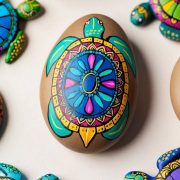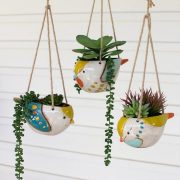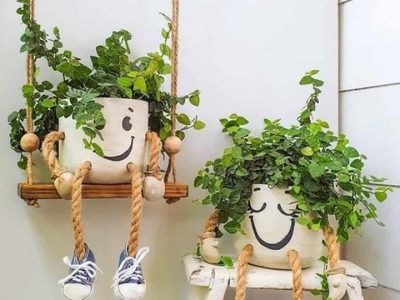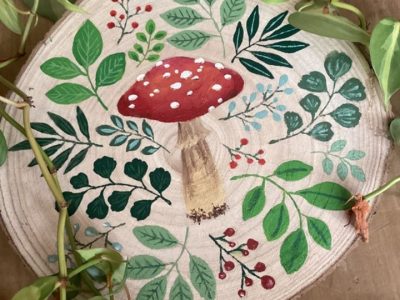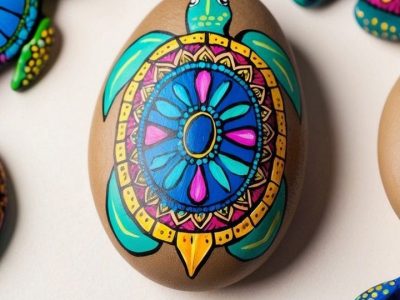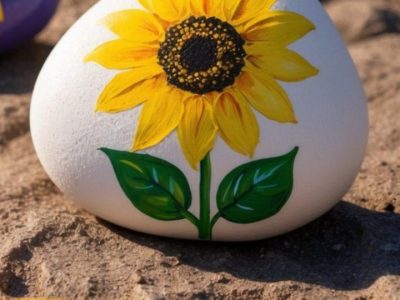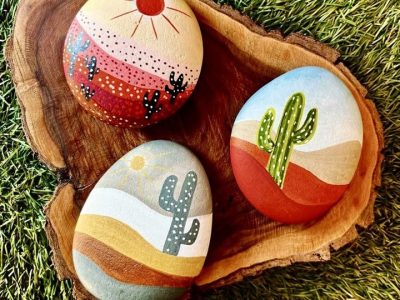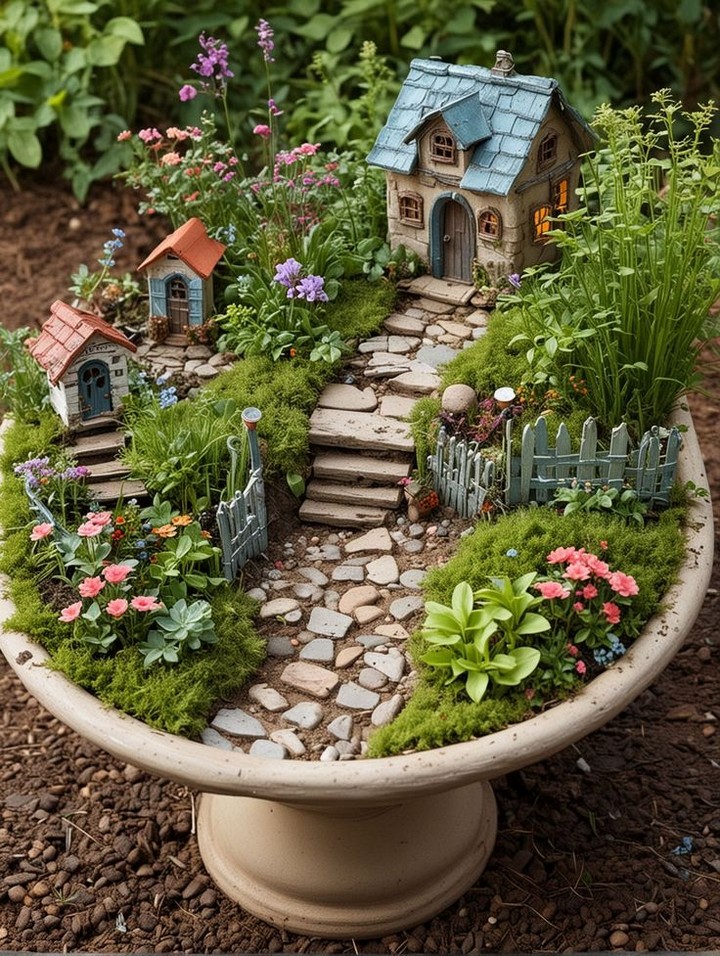44 Painted Rock Mandala Ideas: Transform Ordinary Stones Into Sacred Art
Rock painting has evolved from a simple childhood craft into a therapeutic art form that brings communities together. Among the most captivating designs are mandalas—circular patterns that represent wholeness, unity, and the cosmos in Hindu and Buddhist traditions. When combined with the natural canvas of stones, painted rock mandalas create powerful pieces that serve as meditation tools, garden decorations, and meaningful gifts.
What Makes Mandala Rock Painting Special?
Mandala rock painting offers a unique blend of artistic expression and mindful meditation. The circular, symmetrical patterns require focus and patience, naturally slowing down your thoughts and creating a meditative state. Unlike paper-based mandalas, painted rocks become permanent keepsakes that can withstand outdoor elements, making them perfect for garden displays or community rock projects.
The therapeutic benefits of creating mandala art on rocks include stress reduction, improved concentration, and enhanced creativity. The repetitive nature of dot painting and pattern creation activates the same neural pathways associated with meditation, providing both artistic satisfaction and mental wellness benefits.
44 Inspiring Mandala Rock Ideas
Beginner-Friendly Designs
1. Simple Dot Mandala
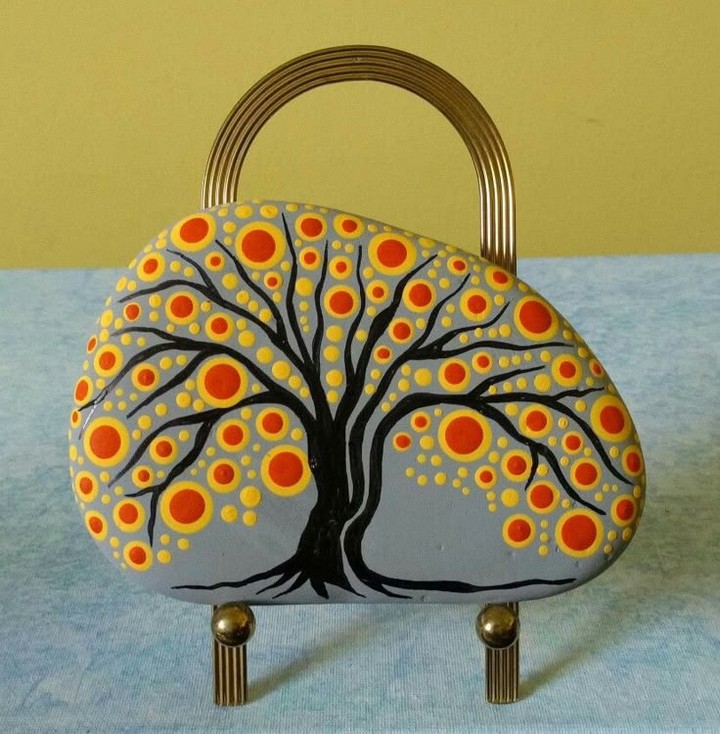
Start with a central dot and create concentric circles using different colored dots. This fundamental technique teaches spacing and symmetry. Begin with white dots on a dark base, then add colorful accents. Perfect for building confidence and mastering the basic dotting technique that forms the foundation of all mandala work.
2. Petal Flower Mandala
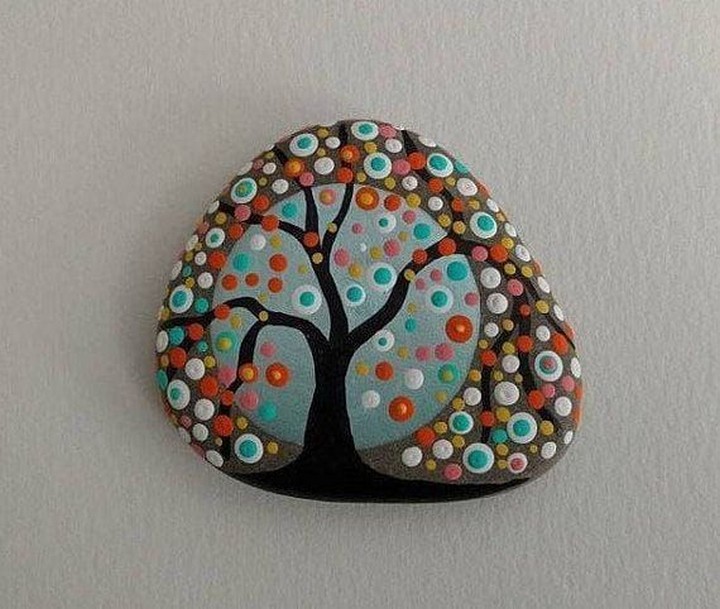
Paint simple petal shapes radiating from the center, using alternating colors to create depth and visual interest. Use teardrop shapes in pink, purple, and white to mimic cherry blossoms or lotus petals. Add small dots between petals for extra detail and visual balance.
3. Sunshine Mandala

Create radiating lines from a central circle, resembling sun rays with decorative dots along each line. Use warm yellows, oranges, and golds to capture the essence of sunlight. Add gradient effects by making rays darker at the center and lighter toward the edges.
4. Basic Geometric Mandala

Use triangles, squares, and circles in repeating patterns around a central focal point. Start with four triangles pointing outward, then add squares in the corners and circles between each shape. This design teaches fundamental geometric principles and pattern repetition.
5. Spiral Shell Mandala
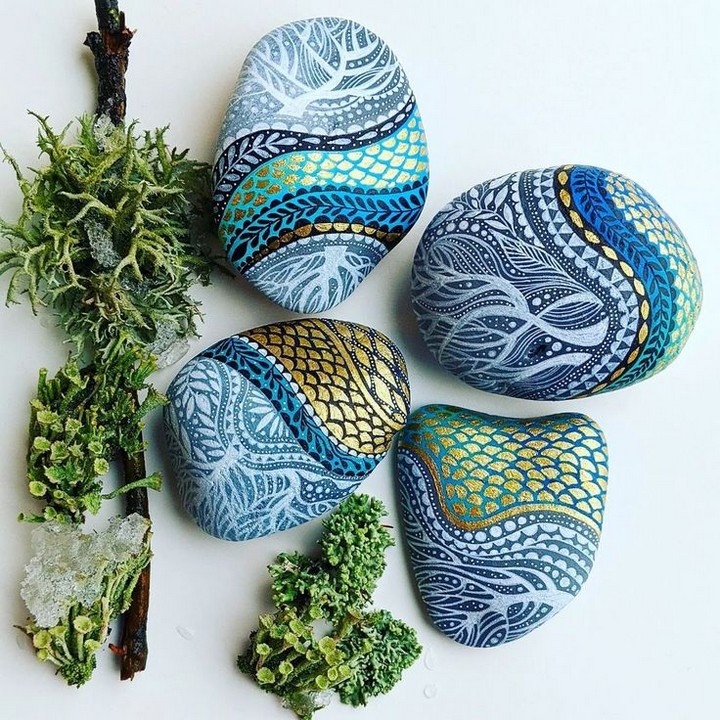
Incorporate spiral motifs reminiscent of nautilus shells, using flowing curved lines and dots. Paint in ocean blues and sandy beiges, adding white foam dots along spiral edges. This design introduces curved line work and natural mathematical patterns found in nature.
6. Rainbow Ring Mandala

Paint concentric circles in rainbow order, adding simple dot patterns between each color band. Start with red at the center and work outward through orange, yellow, green, blue, indigo, and violet. Add white dots between each ring for definition and sparkle.
7. Star Burst Mandala

Design an eight-pointed star as the central element, surrounded by complementary geometric shapes. Use metallic gold or silver for the star, then add smaller stars, diamonds, and dots in coordinating colors. This creates a celestial theme perfect for evening meditation.
8. Heart-Centered Mandala
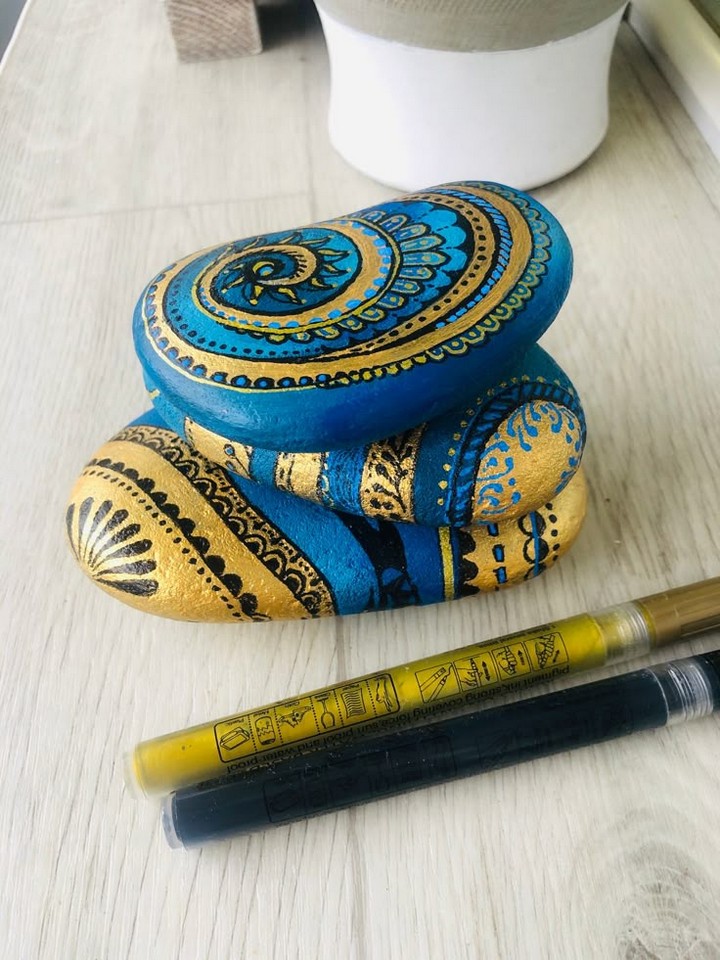
Replace the traditional center dot with a small heart, radiating patterns outward in symmetrical designs. Use soft pinks and purples with white accents to create a loving, gentle energy. Add smaller hearts in the outer rings and connect with flowing vine-like patterns.
9. Moon Phase Mandala
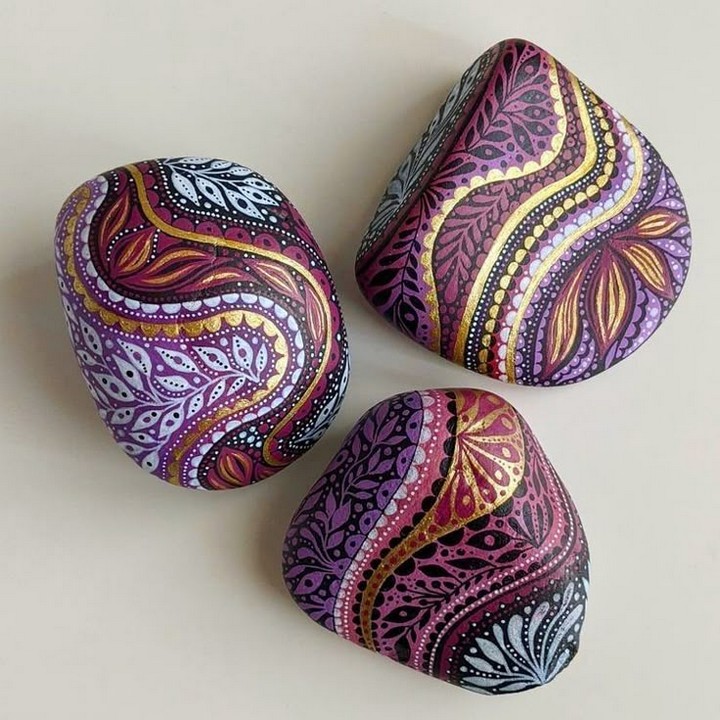
Incorporate crescent shapes and circles to represent lunar cycles within the mandala structure. Paint in silver, deep blue, and black to capture nighttime mystique. Add stars and celestial dots throughout the design to enhance the cosmic theme.
10. Butterfly Wing Mandala
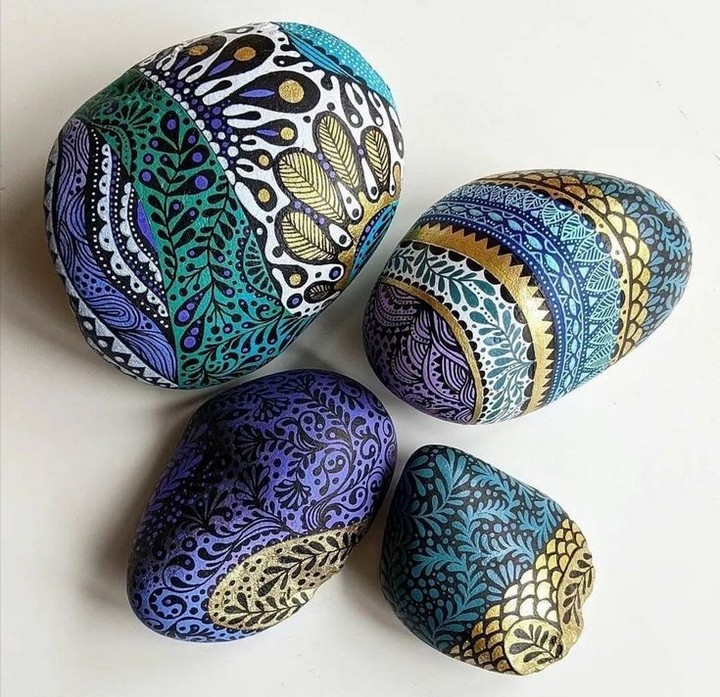
Create patterns inspired by butterfly wing designs, using symmetrical elements and nature-inspired colors. Focus on the intricate patterns found on monarch or swallowtail butterfly wings, using oranges, blacks, and whites. Add delicate line work to mimic wing veins and natural markings.
11. Compass Rose Mandala
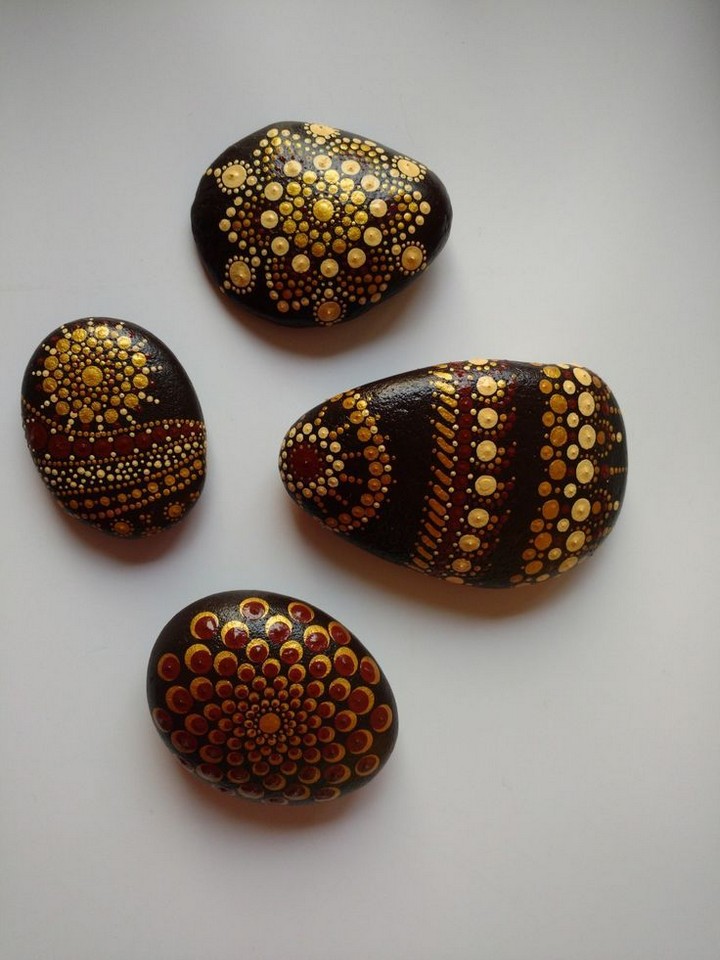
Design a navigation-inspired mandala with directional points and decorative elements between each cardinal direction. Use traditional nautical colors like navy blue, gold, and white. Add rope-like borders and anchor symbols to enhance the maritime theme.
Intermediate Creations
12. Layered Lotus Mandala

Paint multiple layers of lotus petals in graduating sizes, using complementary colors and metallic accents. Start with large outer petals in deep purple or pink, then add smaller inner layers in lighter shades. Finish with a golden center and delicate white dots along petal edges to represent morning dew.
13. Celtic Knot Mandala
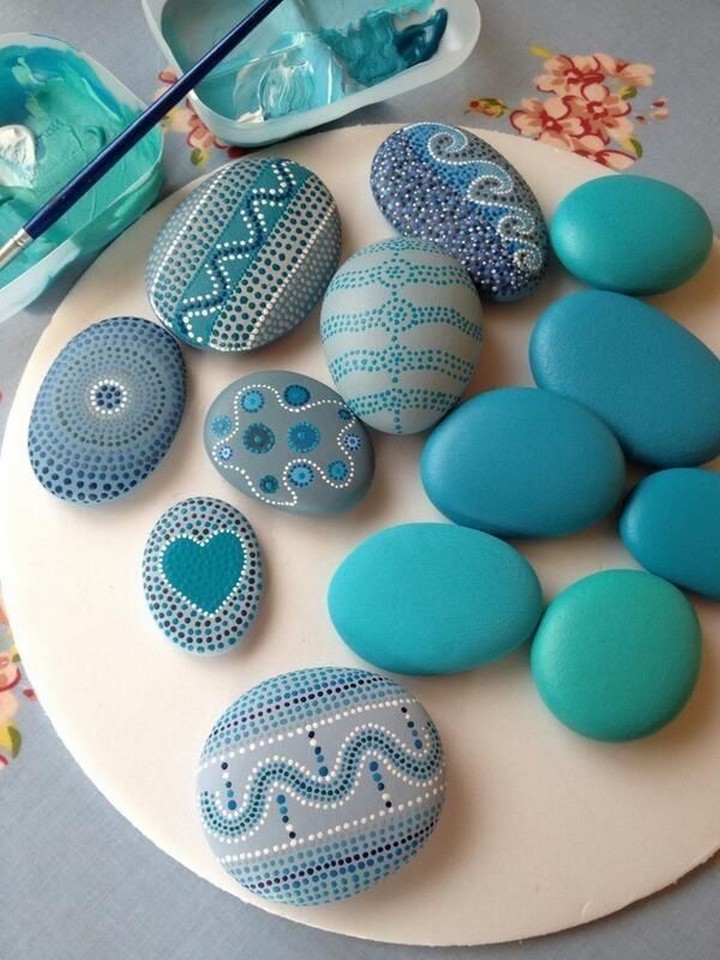
Incorporate interwoven Celtic knot patterns within circular mandala framework, combining cultural artistic traditions. Use emerald green, gold, and black to create authentic Celtic coloring. Focus on the continuous, unbroken lines that symbolize eternity and interconnectedness in Celtic culture.
14. Paisley Pattern Mandala
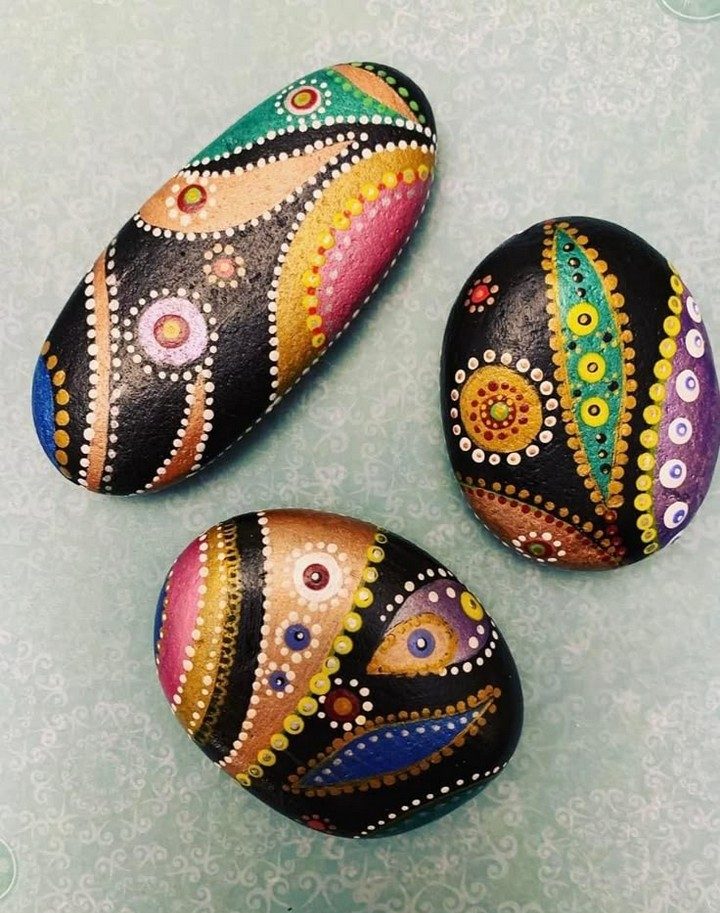
Use teardrop paisley shapes as repeating elements, creating intricate flowing patterns throughout the design. Paint in rich jewel tones like sapphire blue, emerald green, and ruby red with gold outlines. Add tiny dots and swirls within each paisley to enhance the traditional Indian aesthetic.
15. Feather Motif Mandala
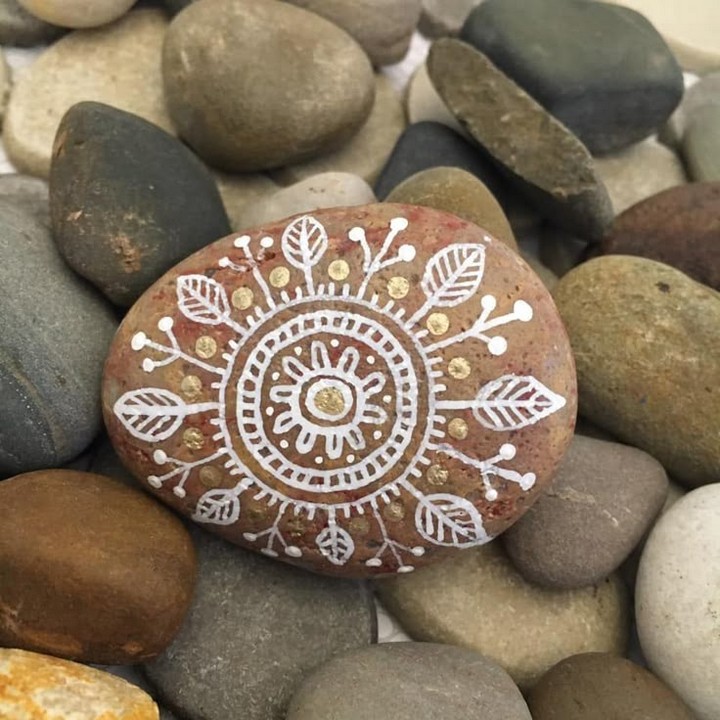
Paint detailed feather designs radiating from the center, incorporating natural color gradients and fine line work. Use earth tones like browns, tans, and whites to mimic eagle or hawk feathers. Add delicate barb details and natural texture patterns to create realistic feather representations.
16. Tribal Fusion Mandala
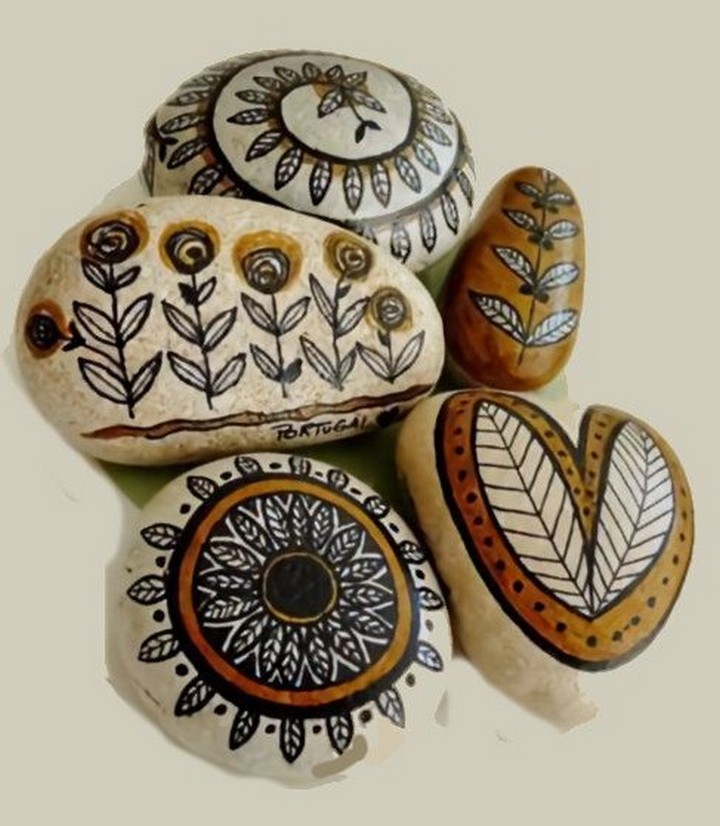
Combine traditional tribal patterns with mandala symmetry, using bold geometric shapes and contrasting colors. Incorporate African, Native American, or Polynesian design elements in black, white, and red. Focus on strong angular patterns and symbolic meanings from various cultural traditions.
17. Ocean Wave Mandala
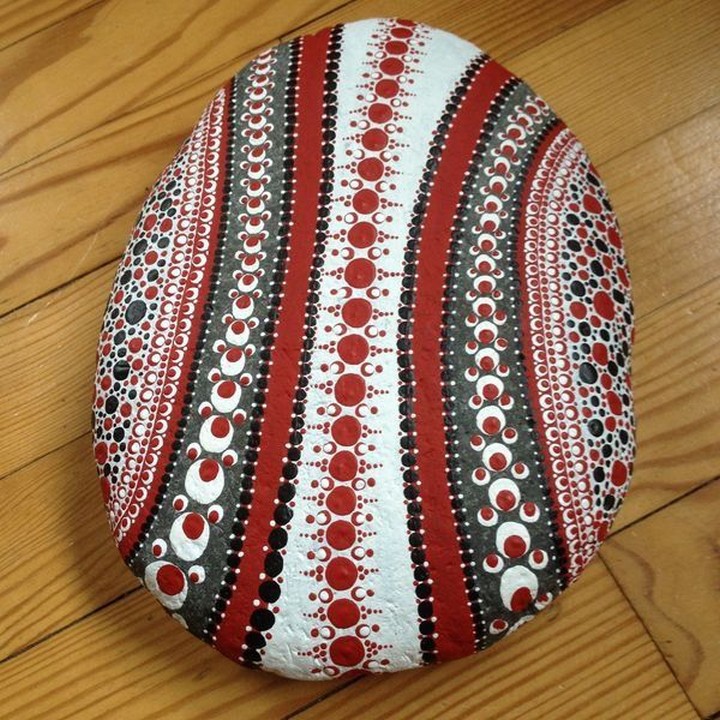
Create flowing wave patterns using blues and greens, incorporating foam dots and water-inspired elements. Use gradient techniques to show depth and movement in the water. Add small white dots for foam and bubbles, and include sea-inspired elements like shells and starfish in the outer rings.
18. Desert Cactus Mandala
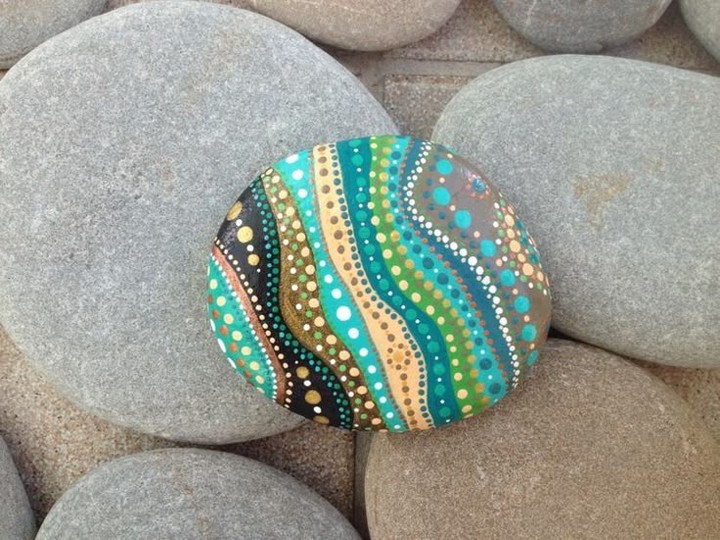
Design southwestern-inspired patterns featuring cactus shapes, desert colors, and geometric Native American motifs. Use warm oranges, terracotta reds, and sage greens with turquoise accents. Include traditional geometric patterns and add small cactus flowers for vibrant color pops.
19. Tree of Life Mandala
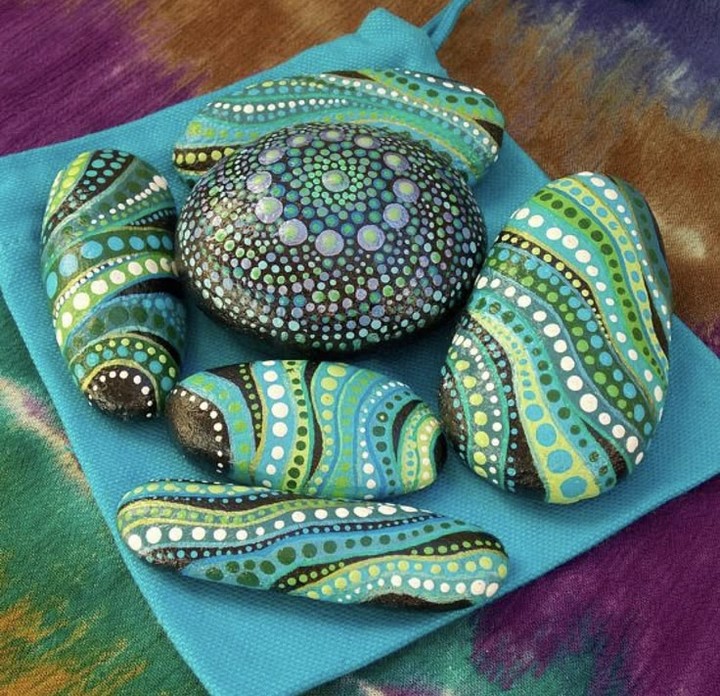
Paint a stylized tree within the mandala circle, with roots and branches creating natural symmetrical patterns. Use brown for the trunk and branches, with seasonal colored leaves like autumn reds and oranges or spring greens. Add small birds, flowers, or fruit to enhance the life-giving symbolism.
20. Henna-Inspired Mandala
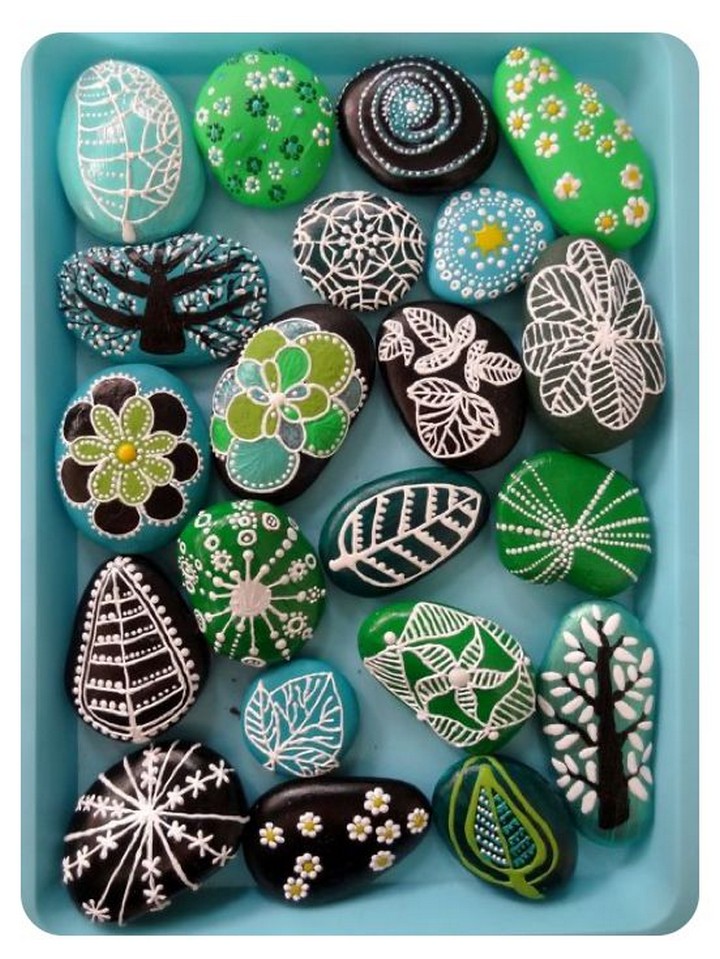

Replicate traditional henna designs using fine lines, dots, and intricate patterns in earthy tones. Focus on traditional motifs like paisleys, flowers, and geometric patterns in reddish-brown henna colors. Add delicate line work and small filling patterns to achieve authentic mehndi styling.
21. Galaxy Swirl Mandala
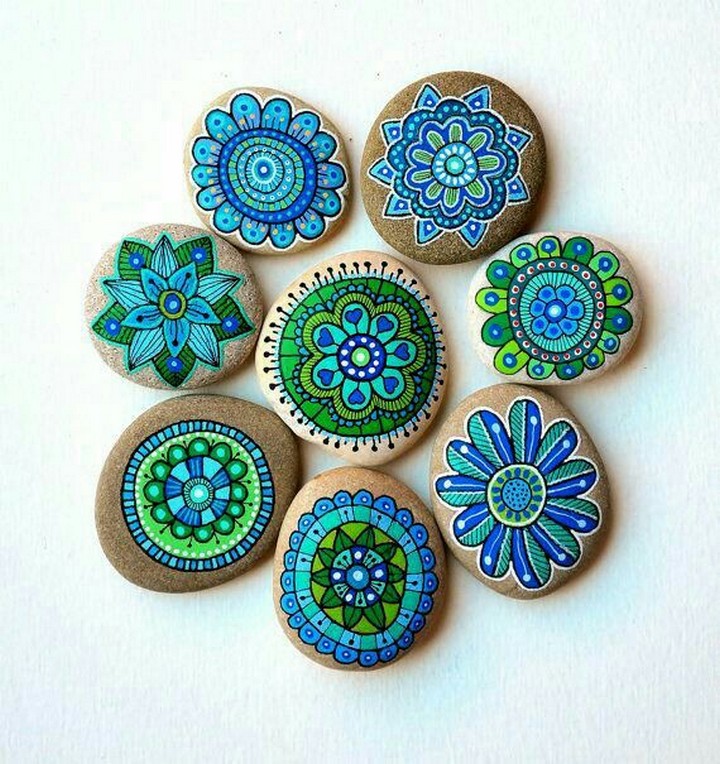
Create cosmic patterns with swirling galaxies, stars, and planetary elements using deep purples and metallics. Use sponging techniques to create nebula effects, then add silver and gold stars throughout. Include planets in various sizes and add comet trails for dynamic movement.
22. Sacred Geometry Mandala
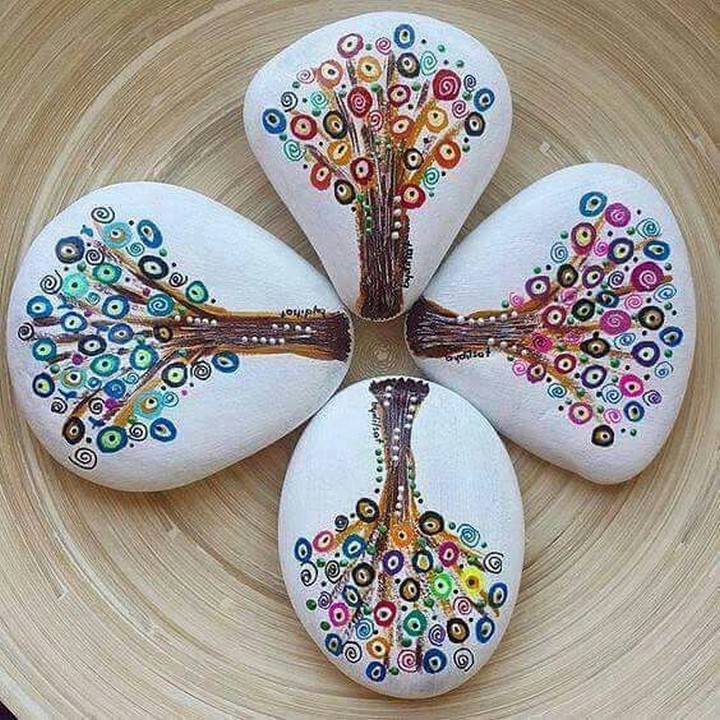
Incorporate mathematical principles like the Golden Ratio and Fibonacci sequences into geometric mandala designs. Use precise measurements to create perfect proportions and mathematical relationships. Paint in complementary colors that enhance the geometric precision and spiritual significance.
23. Dreamcatcher Mandala

Combine dreamcatcher elements with mandala patterns, featuring web-like designs and hanging feather motifs. Use traditional Native American colors like turquoise, white, and brown. Create intricate web patterns in the center and add flowing feathers around the outer edge.
24. Crystalline Structure Mandala
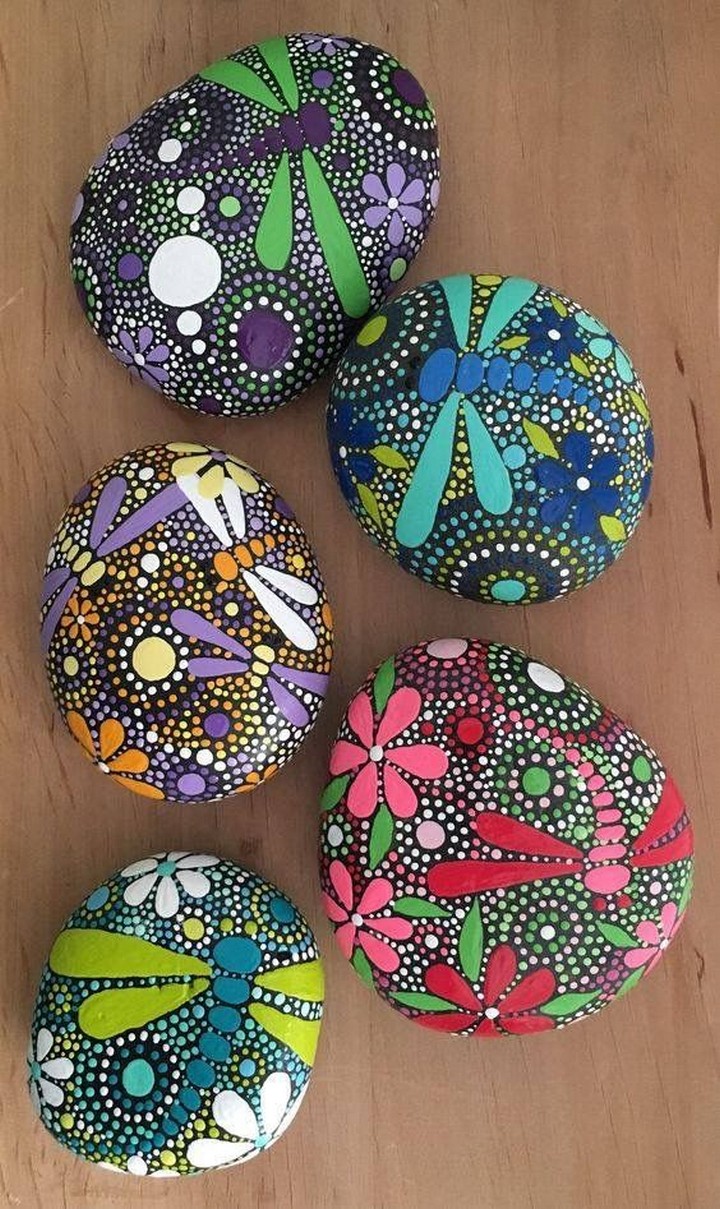
Paint patterns inspired by crystal formations and mineral structures, using angular geometric shapes. Use metallic paints and iridescent colors to mimic the natural sparkle of crystals. Focus on precise geometric angles and faceted surfaces that reflect light naturally.
25. Vintage Lace Mandala

Create delicate, intricate patterns reminiscent of antique lace doilies, using fine brushwork and soft colors. Paint in cream, ivory, and pale pink with subtle gray shadows. Focus on delicate, feminine patterns with fine details that require patience and steady hands.
26. Chakra Balance Mandala
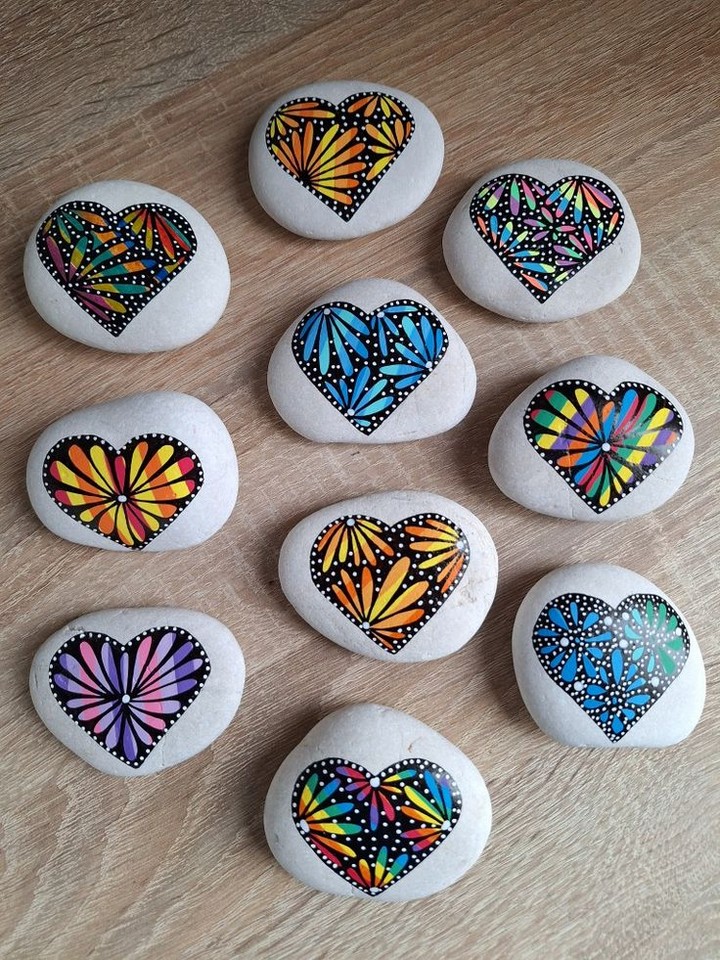
Design mandalas representing each chakra color and symbol, creating a complete set for meditation practice. Use traditional chakra colors from red (root) to violet (crown), incorporating Sanskrit symbols and meaningful geometric patterns. Each stone represents a different energy center.
27. Seasonal Elements Mandala

Incorporate seasonal motifs like autumn leaves, winter snowflakes, spring flowers, or summer suns. Adapt colors and patterns to match the chosen season, using appropriate natural elements. Add texture and depth to represent the unique characteristics of each season.
28. Animal Spirit Mandala

Integrate stylized animal shapes and totems within the mandala framework, honoring animal symbolism. Choose animals with personal significance and incorporate their natural colors and patterns. Add symbolic elements that represent the animal’s spiritual meaning and characteristics.
Advanced Masterpieces
29. 3D Illusion Mandala
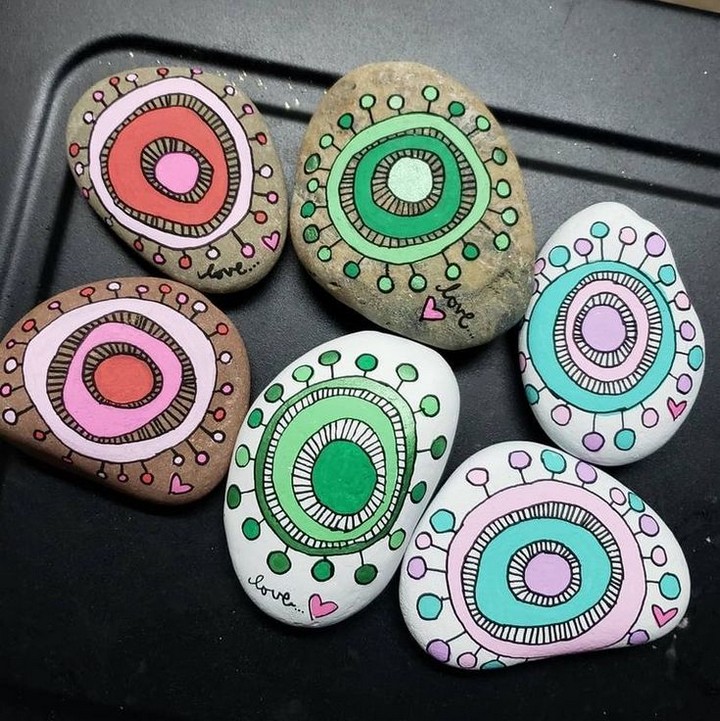
Use shading and highlighting techniques to create the appearance of raised or recessed elements within the flat design. Master light source placement and shadow work to make patterns appear to float above or sink into the rock surface. Use graduated color tones and strategic white highlights to achieve dimensional effects that trick the eye.
30. Glow-in-the-Dark Mandala

Incorporate phosphorescent paints to create mandalas that reveal hidden patterns in darkness. Layer glow paint over traditional colors for dual-purpose designs that transform at night. Focus on celestial themes like stars, moons, and cosmic patterns that naturally suit the glowing effect for magical nighttime displays.
31. Metallic Accent Mandala
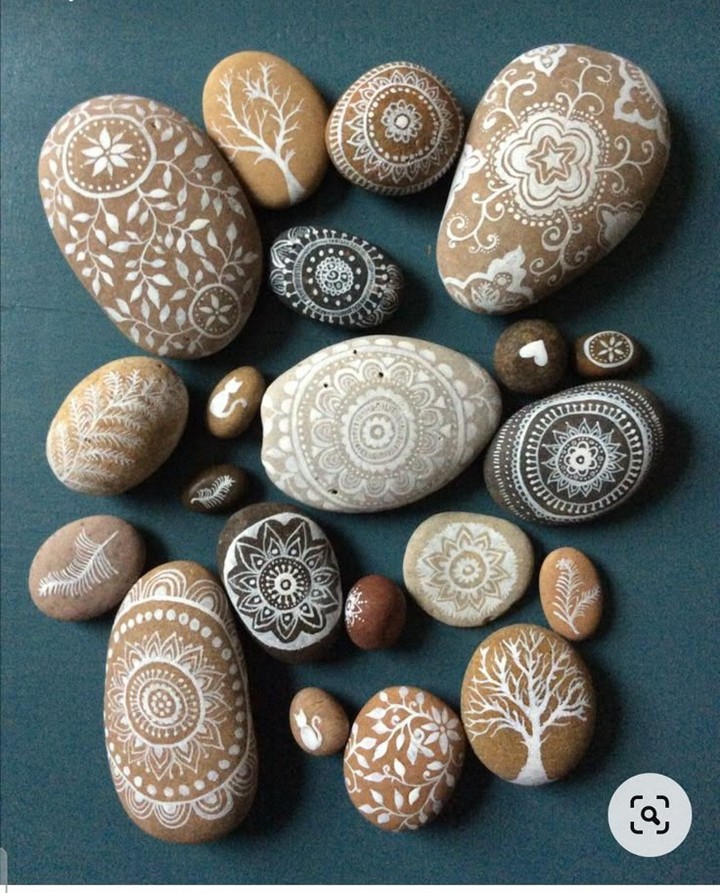
Use gold, silver, and copper leafing or metallic paints to create luxurious, eye-catching designs. Apply metallic elements strategically to highlight key features and create elegant contrast. Combine with rich jewel tones for maximum impact and sophisticated appeal that catches light beautifully.
32. Miniature Detail Mandala

Create incredibly intricate designs on smaller rocks, requiring magnification tools and exceptional precision. Focus on tiny dot work, fine line details, and complex patterns that showcase technical skill. Use high-quality fine brushes and steady hands to achieve museum-quality miniature artwork.
33. Split-Rock Mandala

Design complementary patterns across multiple rocks that form a complete mandala when placed together. Plan the overall design carefully, ensuring each rock works independently while contributing to the larger composition. Perfect for creating large-scale installations or interactive puzzle-like art pieces.
34. Textured Surface Mandala

Use modeling paste or texture mediums to create raised surfaces before painting, adding dimensional elements. Build up areas with texture gel, then paint over the dried surface to create tactile mandala experiences. Combine smooth and textured areas for dynamic visual and physical contrast.
35. Color-Changing Mandala
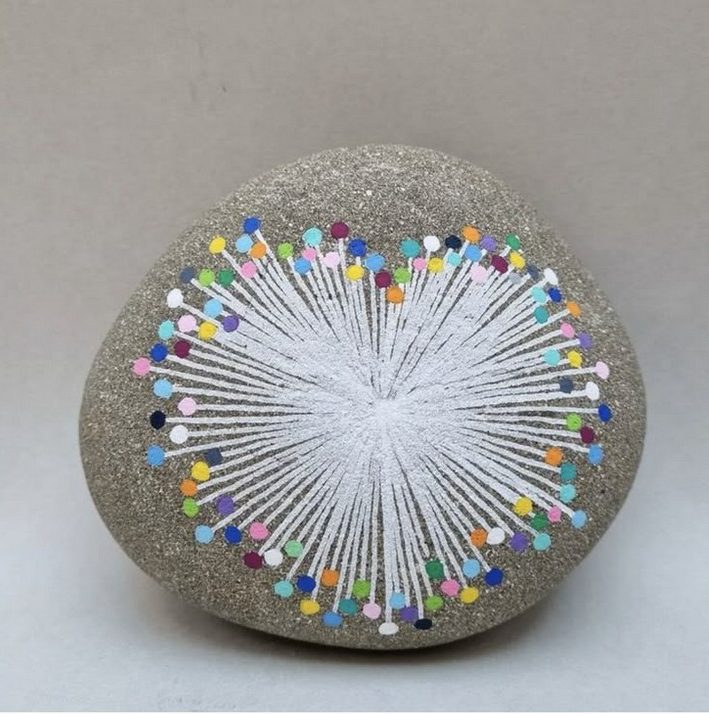
Utilize thermochromic or photochromic paints that change color with temperature or light exposure. Create interactive mandalas that respond to touch, sunlight, or environmental changes. Design patterns that reveal different aspects as colors shift, creating living, breathing artwork.
36. Mirror Mosaic Mandala
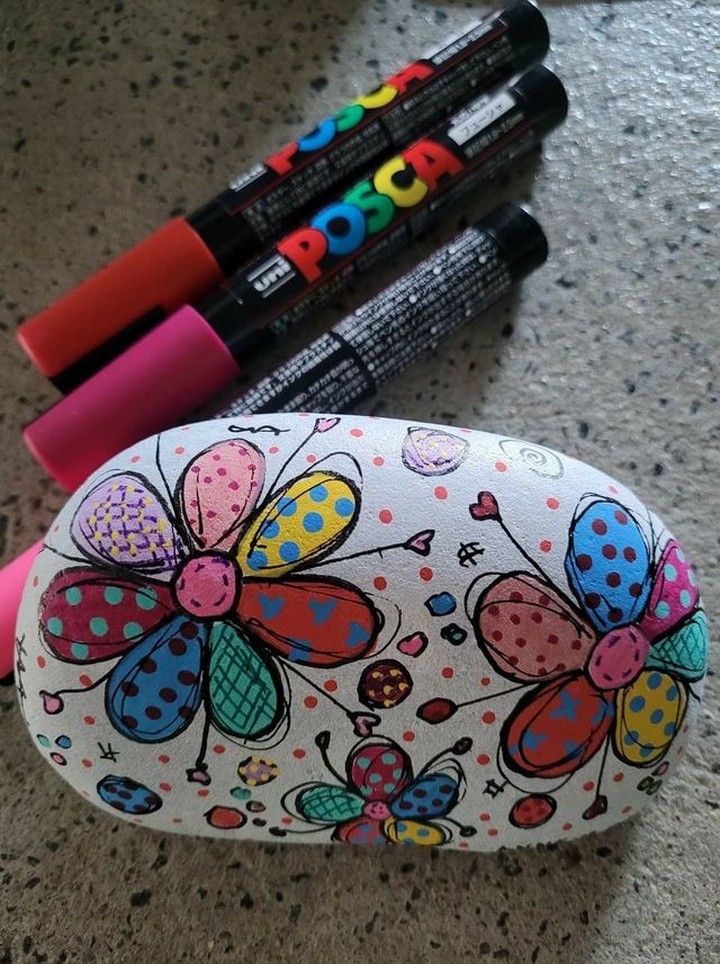
Incorporate small mirror pieces or reflective materials within painted patterns for dynamic light reflection. Use craft mirrors, metallic leafing, or reflective paint to create sparkling effects that change throughout the day. Balance reflective elements with painted areas for optimal visual impact.
37. Fluorescent UV Mandala

Use blacklight-reactive paints to create mandalas with hidden elements visible only under UV light. Design dual-purpose pieces that appear one way in normal light and reveal secret patterns under blacklight. Perfect for creating mystical, transformative art experiences.
38. Watercolor Effect Mandala

Master wet-on-wet techniques to create flowing, ethereal mandala designs with soft color transitions. Use diluted acrylics or watercolor paints to achieve gentle bleeding effects and organic color blending. Combine with precise dot work for contrast between flowing and structured elements.
39. Mandala Landscape Hybrid
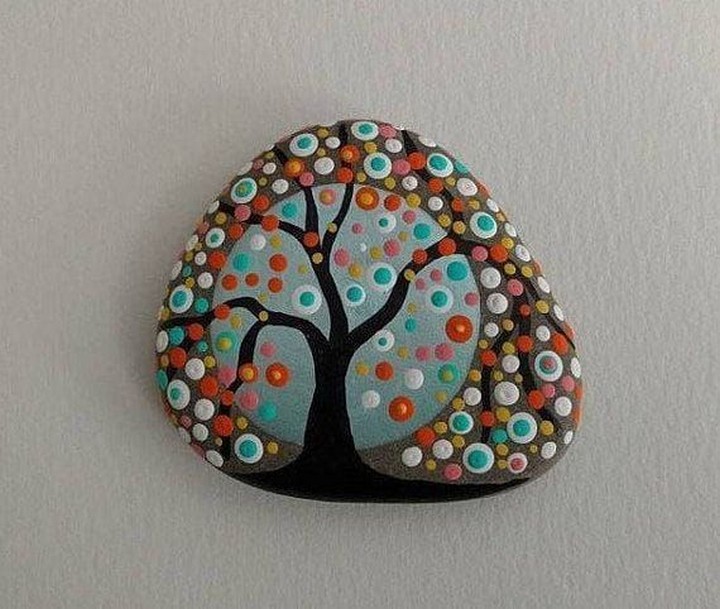
Combine realistic landscape elements with mandala patterns, creating scenes that flow into geometric designs. Paint mountains, trees, or seascapes that gradually transform into mandala patterns. Use this technique to bridge natural and spiritual artistic expressions.
40. Calligraphy Integration Mandala
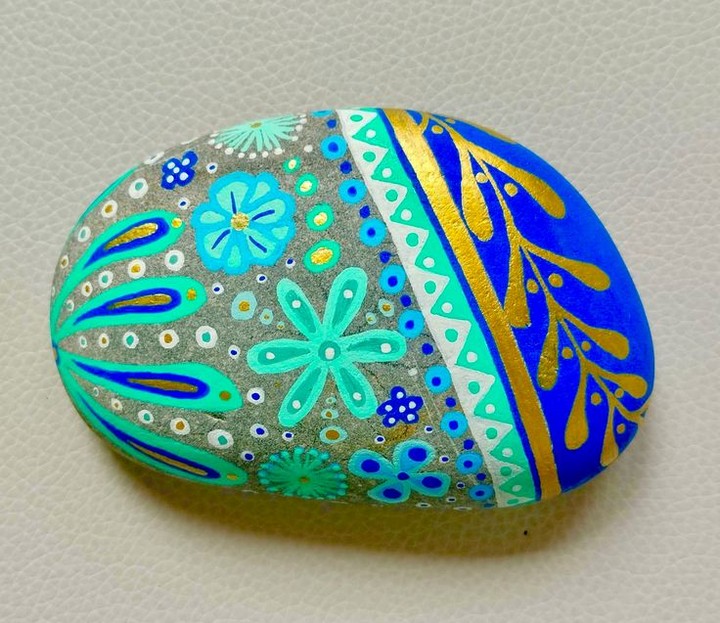
Incorporate meaningful words or phrases in various scripts within the mandala design structure. Use Sanskrit, Arabic, or other sacred scripts to add spiritual significance. Balance text elements with traditional mandala patterns to create meaningful, readable artistic statements.
41. Optical Illusion Mandala

Create patterns that appear to move or shift when viewed, using contrasting colors and strategic placement. Study op-art techniques and apply them to mandala structures for mesmerizing visual effects. Use complementary colors and precise geometric patterns to achieve maximum optical impact.
42. Cultural Heritage Mandala
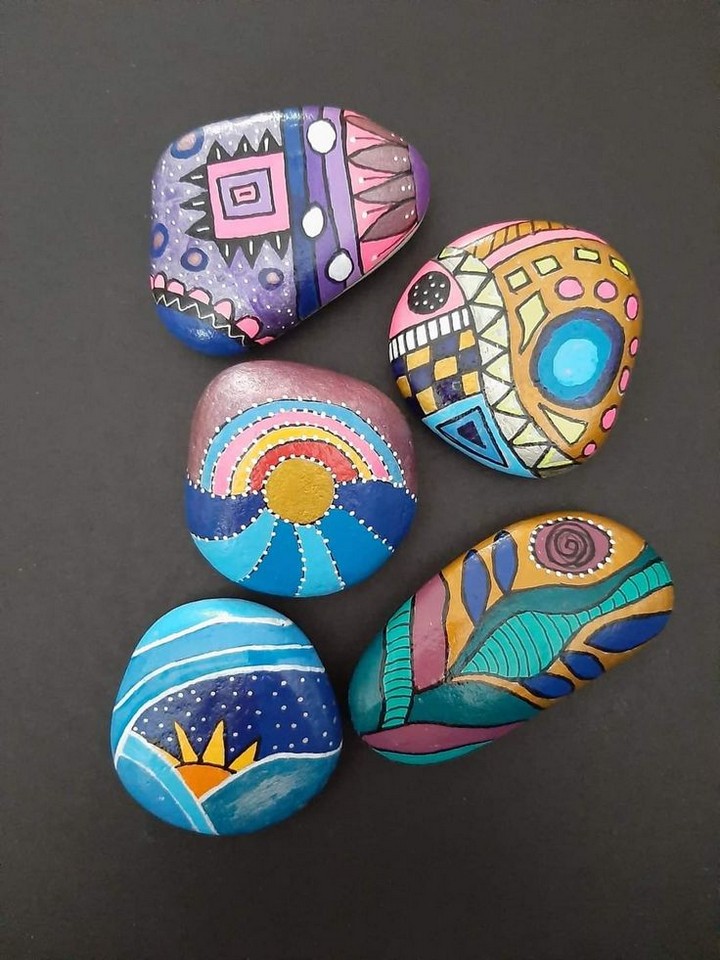
Research and respectfully incorporate traditional patterns from various cultures, creating educational art pieces. Study authentic cultural designs and adapt them respectfully within mandala frameworks. Include information about cultural significance to create meaningful, educational artwork.
43. Phosphorescent Garden Mandala

Design large rocks with phosphorescent elements for nighttime garden illumination and artistic display. Create garden installations that charge during the day and glow at night, providing both beauty and functional lighting. Use weather-resistant materials for long-lasting outdoor displays.
44. Interactive QR Code Mandala
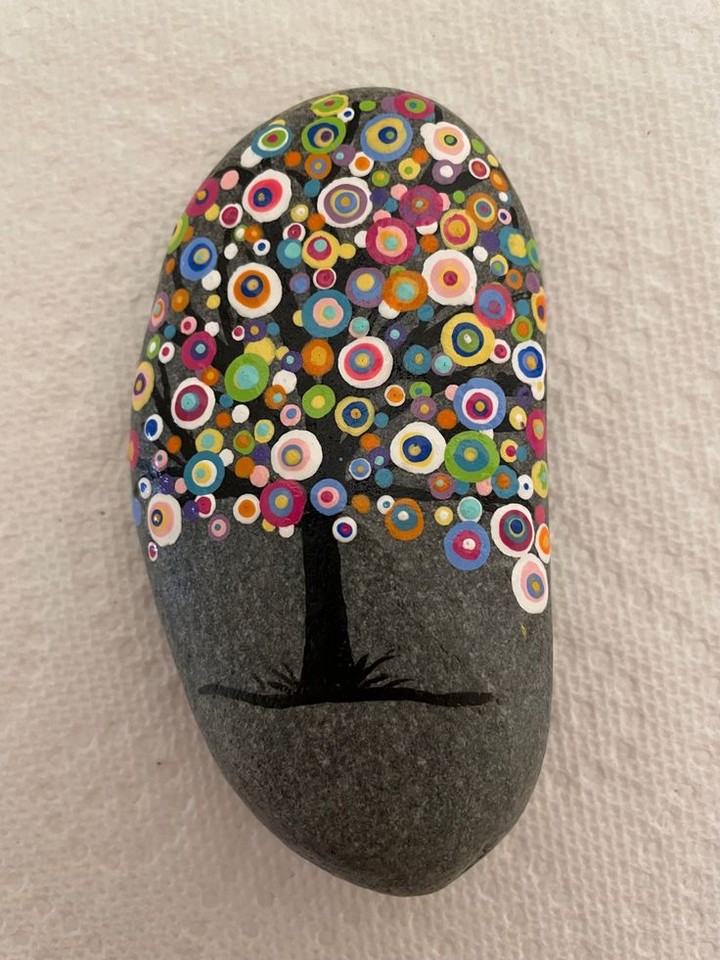
Cleverly integrate QR codes within mandala patterns, linking to digital content while maintaining artistic beauty. Design patterns that incorporate QR codes as decorative elements, linking to meditation music, artistic information, or personal messages. Balance technology with traditional artistic beauty.
Color Psychology in Mandala Rock Art
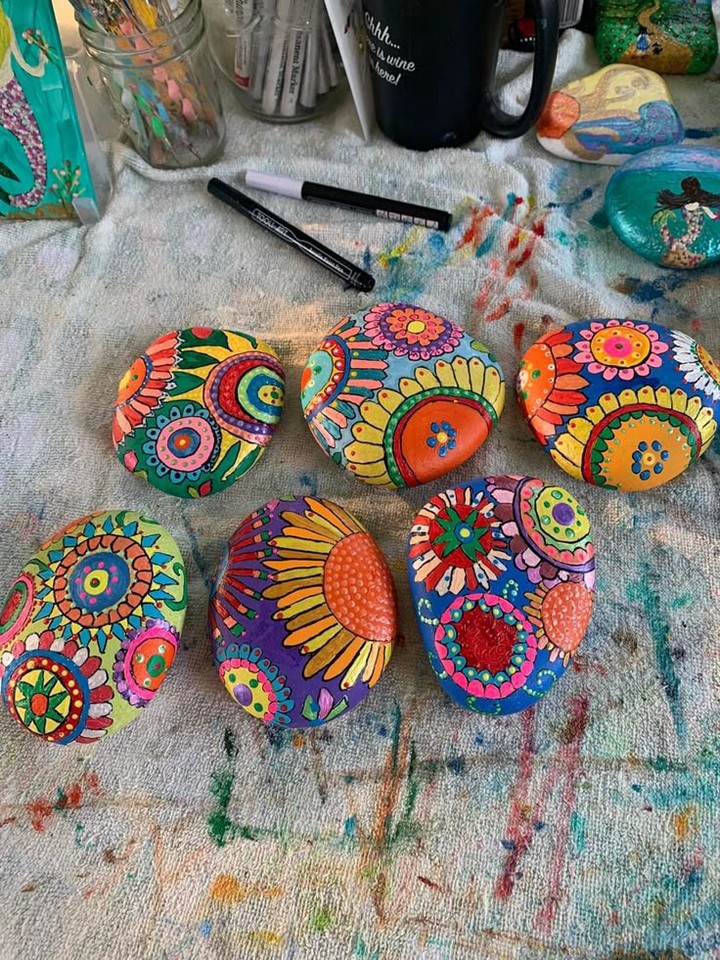
Understanding color psychology enhances the emotional impact of your mandala rocks. Red energizes and stimulates passion, while blue promotes calm and peace. Green represents growth and healing, perfect for garden placement. Purple connects to spirituality and creativity, while yellow brings joy and optimism. Orange combines red’s energy with yellow’s happiness, creating warm, welcoming pieces.
Consider the intended purpose of your mandala rock when selecting colors. Meditation stones benefit from calming blues and purples, while garden displays might feature vibrant oranges and greens that complement natural surroundings.
Displaying and Sharing Your Mandala Rocks
Mandala rocks serve multiple purposes beyond personal satisfaction. Create meditation gardens by arranging various sized mandala rocks in peaceful outdoor spaces. Gift meaningful pieces to friends and family, with each mandala carrying personal significance or chosen colors.
Participate in community rock painting projects, hiding decorated rocks for others to discover. Many communities have active rock painting groups that spread joy through hidden artistic treasures.
Document your creations with high-quality photographs before placing them outdoors. This creates a portfolio of your artistic journey and helps refine techniques for future projects.
Therapeutic Benefits and Community Connection
Mandala rock painting offers significant therapeutic value beyond artistic expression. The meditative process of creating symmetrical patterns helps reduce anxiety and stress while improving focus and concentration. Many therapists incorporate mandala creation into treatment plans for various mental health conditions.
Community aspect strengthens social connections as rock painting groups form around shared interests. Local parks, libraries, and community centers often host rock painting events that bring people together across age groups and backgrounds.
The act of hiding decorated rocks for others to find creates positive community interactions and spreads joy to unexpected recipients. Many painted rocks travel far from their original locations, carried by appreciative finders to new communities.
Seasonal and Special Occasion Mandalas
Adapt your mandala designs to celebrate seasons and special occasions. Spring mandalas might feature pastel colors with flower and butterfly motifs. Summer designs could incorporate bright, bold colors with sun and ocean themes.
Autumn mandalas showcase warm oranges, reds, and browns with leaf patterns, while winter designs feature cool blues and whites with snowflake and crystal patterns.
Holiday-themed mandalas make meaningful gifts and decorations. Christmas mandalas might incorporate traditional red and green with star patterns, while Halloween designs could feature orange and black with mystical symbols.
Your Journey Into Mandala Rock Art
Painted rock mandalas represent more than decorative objects—they embody patience, creativity, and spiritual connection to ancient artistic traditions. Whether you’re seeking therapeutic benefits, artistic challenge, or community connection, mandala rock painting offers something meaningful for everyone.
Start with simple designs and gradually work toward more complex creations as your skills develop. Remember that each rock is unique, just as each mandala carries its own energy and meaning. The imperfections and variations that occur naturally in hand-painted work add character and authenticity that mass-produced items cannot replicate.
Your mandala rock journey connects you to artists across cultures and centuries who have found meaning in circular, symmetrical designs. Each stone you transform carries forward this ancient tradition while expressing your personal creative vision.
Ready to start your mandala rock painting adventure? Share your creations in the comments below and inspire others with your unique designs! Don’t forget to tag your social media posts with #MandalaRockArt to connect with fellow artists worldwide. Which of these 44 ideas will you try first? Let us know your favorite design concept and any variations you plan to explore!


